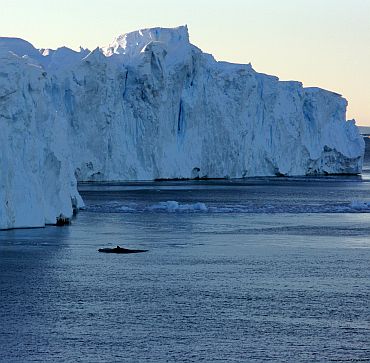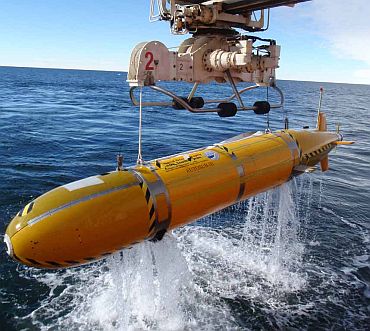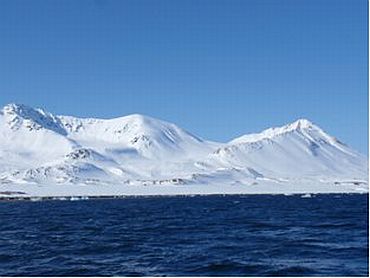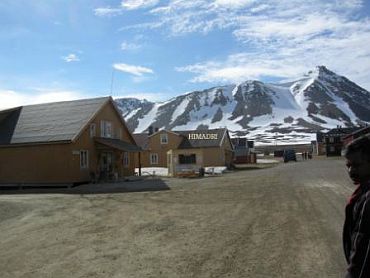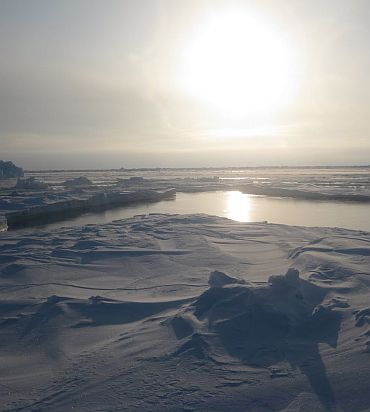 | « Back to article | Print this article |
Why global sea levels are rising alarmingly
Powerful ocean currents beneath West Antarctica's Pine Island Glacier Ice Shelf are eroding the ice from below, speeding the melting of the glacier as a whole, a new study has found.
According to the study, published in the journal Nature Geoscience, a growing cavity beneath the ice shelf has allowed more warm water to melt the ice -- a process that feeds back into the ongoing rise in global sea levels.
The glacier is currently sliding into the sea at a clip of 4km (2.5 miles) a year, while its ice shelf is melting at about 80 cubic kilometres a year -- 50 per cent faster than it was in the early 1990s, the researchers said.
"More warm water from the deep ocean is entering the cavity beneath the ice shelf, and it is warmest where the ice is thickest," said Stan Jacobs, an oceanographer at Columbia University's Lamont-Doherty Earth Observatory and the lead author of the study.
Click on NEXT to read further...
Why global sea levels are rising alarmingly
In 2009, Jacobs and an international team sailed to the Amundsen Sea aboard the icebreaking ship Nathaniel Palmer to study the region's thinning ice shelves -- floating tongues of ice where landbound glaciers meet the sea.
One goal was to study oceanic changes near the Pine Island Glacier Ice Shelf, which they had visited in an earlier expedition, in 1994.
The researchers found that in that 15 years, melting beneath the ice shelf had risen by about 50 per cent. Although regional ocean temperatures had also warmed slightly, by 0.2 degrees C or so, that was not enough to account for the jump.
The local geology offered one explanation. On the same cruise, a group led by Adrian Jenkins, a researcher at British Antarctic Survey and study co-author, sent a robot submarine beneath the ice shelf, revealing an underwater ridge.
Why global sea levels are rising alarmingly
The researchers found that the ridge had once slowed the glacier like a giant retaining wall. When the receding glacier detached from the ridge, sometime before the 1970s, the warm deep water gained access to deeper parts of the glacier.
Over time, the inner cavity grew, more warm deep water flowed in, more melt water flowed out, and the ice thinned. With less friction between the ice shelf and seafloor, the landbound glacier behind it accelerated its slide into the sea.
Other glaciers in the Amundsen region have also thinned or widened, including Thwaites Glacier and the much larger Getz Ice Shelf.
Why global sea levels are rising alarmingly
In recent decades, researchers have found evidence that Antarctica is getting windier, and this may also help explain the changes in ocean circulation.
Stronger circumpolar winds would tend to push sea ice and surface water north, said Jacobs. That in turn, would allow more warm water from the deep ocean to upwell onto the Amundsen Sea's continental shelf and into its ice shelf cavities.
Pine Island Glacier, among other ice streams in Antarctica, is being closely watched for its potential to redraw coastlines worldwide.
Global sea levels are currently rising at about 3mm (.12 inches) a year. By one estimate, the total collapse of Pine Island Glacier and its tributaries could raise sea level by 24 cm (9 inches).
Why global sea levels are rising alarmingly
The Indian mission on the Arctic region has concluded that the capability of this icy continent to behave as a 'global carbon sink' would drastically reduce in the future due to the quickly receding glacier cover.
Researchers from National Institute of Oceanography (NIO), who returned from the Arctic assignment recently, have said that the trend is a serious concern as it may fuel the global warming across Earth.
NIO's senior scientist S Prasannakumar said that Arctic seas and land together accounts for about 25 per cent of the world's carbon sink.
"The melting of glaciers and Ice cover from Fjords would mean a less efficient carbon sink that would end up in faster global warming," he said.
Why global sea levels are rising alarmingly
The five-member NIO team, which was in the icy continent in the last week of May faced (-4) degree Celsius temperature.
The scientists have chosen Kongsforden Fjord as the sample water body which would now be monitored for next decade.
Prassanakumar said that Kongsforden Fjord is situated just 100 metres away from Himadri, Indian research station on Arctic continent. Fjord is a long inlet with steep sides (cliff) created in a valley carved by glacier activity.
The Fjord is being studied for physical, chemical and biological parameter study of Kongsforden Fjord located in the Arctic region.
Why global sea levels are rising alarmingly
The scientists have raised concerns on melting glacier as the phenomenon has been reported more rapid since last half a decade.
Dr Prasannakumar said 'in simple terms, this means that Arctic will loose its ability to absorb large amount of carbon dioxide thereby accelerating the global warming process.'
The other worries like melting glaciers would enhance the sea water are also on the agenda of researchers.
"It is estimated that Arctic region would be ice free in next 30-40 years time," the researcher said adding 'global carbon cycle will change with the melting of Arctic glaciers.'
The scientists said in the past opening up of Fjords from Ocean side was a normal phenomenon. But now it has been witnessed that even the glacier sides are opening up.
Alongside the study on glaciers, NIO would be now doing research on Arctic region to find out whether phytoplankton, which are tiny microscopic plants with the capability to synthesise carbon, will be able to act as a neutraliser to this phenomenon of carbon dioxide emission due to melting glaciers.
Goa-based NIO is an initiative of Council of Scientific and Industrial Research, with regional centres at Kochi, Mumbai and Vishakapatnam.
